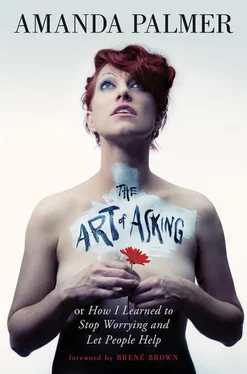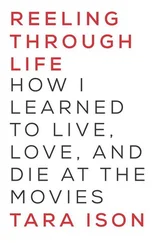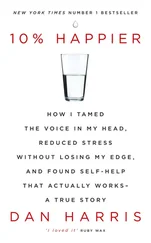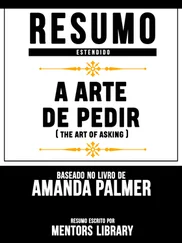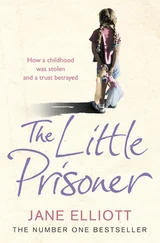Then a French horn player wrote me an open letter on her blog, saying that while she was tempted to join the tour, she felt that the lack of payment was unethical. The blog post went viral, the New York Times ran a story, and within days a controversy had blown up.
And gotten distorted, to boot. A lot of critics on the Internet were starting to claim that I’d made a million dollars and I wouldn’t pay my band.
Actually, I did pay my band; they were all on salary, which meant they got paid even on their days off. As for the volunteers, they had volunteered. No one had anticipated that their performances were going to be seen as political statements. They’d understood the deal when they volunteered, and just wanted to play music.
The initial Kickstarter controversy regarding digital panhandling, which was just dying down, began anew, and now things were darker. Now I was not only begging my fans for money, I was also exploiting musicians in a tawdry search for free labor. It got mean. Gawker, the celebrity news and gossip blog site, referred to my use of crowdsourcing as “the smoke-and-mirrors tactic of a grifter.” A blogger from the New Yorker wrote, “Amanda Palmer’s hustle becomes a half-real and half-symbolic version of the competition to scrape a last dollar from the hides of the desperate.”
The noise was mostly from people who had never heard of me before and knew nothing about me—or the fanbase. My Twitter feed and blog comments, usually sources of comfort and community, were now also filled with people who were only visiting to voice their outrage. A classical musicians’ union started a petition against my unethical crowdsourcing. The day after the Times article ran, I received an email from a professional violinist who’d worked for years with my hometown’s symphony orchestra that opened: “Amanda, you ignorant slut…” and went on to tell me what a terrible person I was, on top of being an untrained, unprofessional, shitty musician.
That hurt. It all hurt.
After a week of this, I threw up my hands and decided to pay the volunteers. It seemed like a harmless solution: They’d be happy to get an unexpected $100 for their time (though some of them gave their surprise paychecks to charity, twittering and blogging that they’d volunteered and wanted to keep it that way). My stressed-out band and I could stop fielding hate bombs in our Twitter feeds. And we could all get back to work.
In the aftermath, a familiar feeling lingered, a leftover from my statue days. The whole controversy was pretty… GET A JOB . But we were all, in our own ways, doing our jobs.
Everybody on the sidewalk who interacted with The Bride was in the arena with me, engaged in the strange exchange. And everyone at my shows—whether onstage, or volunteering, or in the audience—was happily exchanging: favors, flowers, dollars, music, hugs, beer, love, whatever. But the critics were neither with us on the sidewalk, nor with us at the shows. They were yelling from their car windows, or from behind their laptops. They couldn’t see the exchange for what it was: a process that was normal for us, but alien to them.
A short time later, as the outrage was dying down, a paradox struck me that seemed to get at the heart of the matter: What if I’d simply SOLD the chance to come play with the band onstage by making it a package of the Kickstarter—an item for purchase, like a $25 CD or a $10,000 art-sitting? What if I’d charged $100 for the opportunity to come and play trombone live onstage with my band?
I didn’t need to do an experiment to find the answer; The Polyphonic Spree, an orchestral indie band, had already done it for me. They launched a Kickstarter that same month and offered a $1,500 option to come onstage with any instrument and join the band for a few numbers. They limited the number of packages to ten, and sold every one of them.
There was no controversy.
Why not? The conclusion I came to was that people are comfortable as long as there is money flowing in ANY direction, whether from the artist to the volunteer, or from the volunteer to the artist. People can understand a price tag, no matter what it’s stuck on. But some can’t understand a messier exchange of asking and giving—the gift that stays in motion.
• • •
I thought back to my statue days and the GET A JOB critics, who didn’t feel very far off from the people calling me a beggar when I decided to take help directly from my fans.
It said, something, I think, about the fundamental discomfort people have around the artist—or the person—who asks for direct exchange.
A big part of the reason artists feel so squeamish about standing behind their own cash registers is a direct response to the fact that many customers feel squeamish about seeing them there. Nobody would have yelled GET A JOB at the ticket-taker outside a gallery door if The Bride had been on view for a dollar a pop. It seems that, over time, artists and audiences alike have become accustomed to a legitimizing agent, a transactional middleman to throw professional fairy dust over the exchange. The times are changing.
It’s a 180-degree turn from the eighties and nineties, when most exchanges with big musicians were entirely indirect, and involved—at least in my case—getting on your dirt bike, cycling to the mall, walking into the record store, and exchanging your $9.99 for a physical album, which was rung up for you by an indifferent clerk who had absolutely nothing to do with the artist who created the music.
All buskers—and artists, and people—have different degrees of comfort with asking. Some buskers have perfect three-minute pitches in which they yell at a crowd to please give as much as possible (and watching a master at work is a treat—it’s a part of their craft). But my friend Jason Webley, who busked for years with an accordion, refused to put his case out for money… he didn’t like the idea of being coin-operated. So he would play for half an hour, build a crowd, and then he’d sell CDs for $5 at the end of his show, not accepting any donations. If somebody generously tried to give him a twenty instead of a five, he’d simply thrust four CDs at that person.
Everybody finds their own path for letting other people help.
• • •
Who’s allowed to ask? Well, technically, anyone. And the Internet makes it possible for anyone to ask for anything with a signal that can potentially reach anyone else online. The flipside, however, is that you also can’t limit who hears your plea or control who sees your crowdfunding page.
A freelance fine artist once reached out to me over Twitter with the link to his crowdfunding page, asking if I’d help spread the word that he was asking online for help with his medical bills. He’d had a stomach operation, and there were complications keeping him from working. His was a typical tale from the failing American health system—a family, kids, a house, a sudden illness, not enough insurance coverage, mounting medical bills, and potential bankruptcy and impending foreclosure.
I hesitated to help.
I’d recently seen some articles blasting a Canadian couple who were trying to crowdfund their dream of moving to Scotland. Some of the press was nasty, calling them “bizarre” and printing headlines like, “We’d love to live in Scotland. Canuck pay our air fares? Canadian couple launch online bid to fund dream,” while the online comments (as often happens) were even worse:
Are you kidding me? These scroungers want people to pay for their luxuries while we have so many people with a real need that could be helped. SHAME ON THEM!
Читать дальше
